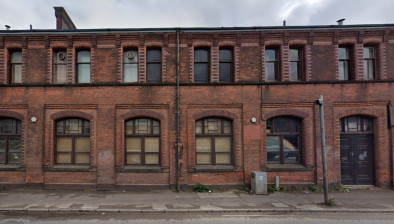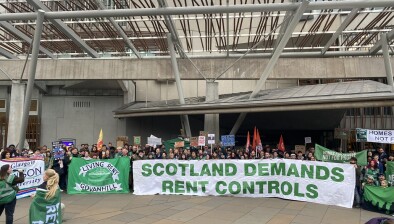Blog: Mid-market investment could alleviate housing storage

Amy Norton argues that promoting more Build to Rent developments for the mid-market rent sector would be an effective means of striking a balance to get investment so more properties are built to help contribute towards the Scottish Government’s affordable housing pledge.
Although it has yet to replicate the level of growth seen south of the border, the Build to Rent (BTR) sector is slowly gaining traction here in Scotland. According to Rettie & Co there are now almost 700 operational BTR homes and almost 5,000 either with planning permission approved or in the planning process.
This is partly the result of an increased appetite for investment in Scotland and greater engagement from local authorities in bringing these developments to fruition. But with many of BTR schemes in England, especially in the London area, focused on the higher end of the rental market, can its continued growth in Scotland help address our housing shortage, which tends to adversely affect lower income families?
Despite developers and investors seeing a more lucrative opportunity in the higher end of the BTR market down south, there may well be potential to strike a balance by incentivising them to build more homes for the mid-market which is already well-established in Scotland.
The first tranche of National Housing Trust schemes have been operational here for a number of years while the mid-market rent developments by Forth Ports in Leith have also been massively oversubscribed, by a ratio of up to 27 applicants to each flat for some cases. It was recently announced last that the revised design framework for Forth Ports’ Western Harbour development, which will include 1,600 mid-market rent homes, has been approved by City of Edinburgh Council.
There are questions as to what extent the development of more mid-market rental homes will contribute to the Scottish Government’s pledge to provide 50,000 affordable homes by 2021. The announcement of a further £150m fund aimed at delivering 1000 affordable homes in Scotland does however mean it will have a key role to play.
While mid-market rents are normally higher than those for a comparable social housing property they tend to be significantly lower than those charged for private rented property. Minimum and maximum household incomes are also factored into the rental charges to ensure tenants are not paying over a certain percentage of their income on rent. There is also a cap in place on these properties so they are not are not rented by those who can afford to rent within the private market.
Many of the BTR schemes in London and other parts of the south are focusing on a premium offering, including concierge services, state of the art gyms, rooftop terraces and even co-working spaces. Meanwhile mid-market rent developers tend to focus on creating safe, warm homes without the bells and whistles which would undoubtedly raise building costs and ultimately rent costs.
This more frugal approach doesn’t mean that the mid-market schemes are without some added extras. Sanctuary Scotland, a housing association which prioritises ‘key workers’ for its over-subscribed properties, is advertising large areas of open amenity space and a unique car free development where tenants will have access to a Car Club within its development in Anderston, Glasgow. Perhaps most crucially, the new developments are advertising as deposit free, an incentive which is more attractive to a mid-market tenant than many of the extras being offered by the premium models.
What is clear is that Scotland has a unique housing market which is different to the one south of the border. The BTR model will therefore continue to thrive by pursuing a different route from the one developing south of the border.
Focusing on the mid-market is a longer term investment with lower yields than traditional asset classes but it is well-suited to the Scottish demographic. As we have seen from some of the examples mentioned above, by getting the private and public sector to work closely together on mid-market BTR developments we can stimulate further new home-building and make a positive impact on easing the national shortage.








